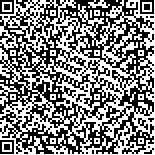| 本文已被:浏览 3076次 下载 2849次 |

码上扫一扫! |
|
|
| 青岛文昌鱼自然保护区营养盐时空分布特征及富营养化评价 |
|
王 昊1,2, 辛 梅3, 陈碧鹃4,5, 朱 琳4,5, 夏 斌4,5, 张 艳4,5, 孙雪梅4,5, 陈聚法4, 曲克明4
|
|
1.上海海洋大学海洋科学学院 上海 201306;2.中国水产科学研究院黄海水产研究所 农业农村部海洋渔业资源可持续发展重点实验室 山东省渔业资源与生态环境重点实验室 青岛 266071;3.青岛市渔业技术推广站 青岛 266071;4.中国水产科学研究院黄海水产研究所 农业农村部海洋渔业资源可持续发展重点实验室 山东省渔业资源与生态环境重点实验室 青岛 266071;5.青岛海洋科学与技术试点国家实验室海洋生态与环境科学功能实验室 青岛 266071
|
|
| 摘要: |
| 本研究分析了2017年9月(夏季)和11月(秋季)青岛市文昌鱼(Branchidermus fasciatus)水生野生动物市级自然保护区营养盐含量的季节变化和平面分布,并对该海域进行了富营养化评价。研究结果显示,2017年溶解无机氮(DIN)平均含量夏季高于秋季,NO2-N、NH4-N平均含量分别是秋季的1.98倍、1.44倍,而NO3-N和PO4-P平均含量低于秋季,分别是秋季的88.8%和47.6%。夏季DIN总体水平优于海水一类标准值,PO4-P总体水平优于海水一类标准值;秋季DIN总体水平优于海水一类标准值,PO4-P总体水平劣于海水一类标准值。从水平分布来看,夏季海水的DIN浓度分布趋势大致呈核心区>实验区>缓冲区的趋势;秋季海水的DIN浓度分布呈缓冲区>实验区>核心区。夏季N/P比值略高于Redfield比值,而秋季N/P比值较低于Redfield比值,DIN相对缺乏。根据潜在性富营养化评价模式,2017年保护区海域夏季和秋季营养水平较低,均属于贫营养水平。 |
| 关键词: 文昌鱼 自然保护区 营养盐 季节变化 富营养化 |
| DOI:10.19663/j.issn2095-9869.20180713002 |
| 分类号: |
| 基金项目:国家自然科学基金委-山东省联合基金项目(U1606404)和青岛海洋科学与技术试点国家实验室海洋生态与环境科学功能实验室创新团队项目(LMEES-CTSP-2018-4)共同资助 |
|
| Temporal and Spatial Variation of Nutrients and Evaluation of the Eutrophication in the Qingdao Lancelet Reserve Area in 2017 |
|
WANG Hao,XIN Mei,CHEN Bijuan,ZHU Lin,XIA Bin,ZHANG Yan,SUN Xuemei,CHEN Jufa,QU Keming
|
|
1.College of Marine Sciences, Shanghai Ocean University, Shanghai 201306;2.Key Laboratory of Sustainable Development of Marine Fisheries, Ministry of Agriculture and Rural Affairs, Shandong Provincial Key Laboratory for Fishery Resources and Eco-Environment, Yellow Sea Fisheries Research Institute, Chinese Academy of Fishery Sciences, Qingdao 266071;3.Qingdao Fisheries Technology Extension Station, Qingdao 266071;4.Laboratory of Marine Ecology and Environmental Science, Pilot National Laboratory for Marine Science and Technology (Qingdao), Qingdao 266003
|
| Abstract: |
| In this study, we have evaluated the level and distribution of nutrients in the Qingdao Lancelet Reserve Area using the results of surveys of the Qingdao Lancelet Reserve Area in September (Summer) and November (Autumn), 2017. The results showed that the average level of dissolved inorganic nitrogen (DIN) in the autumn was higher than that in the summer, and the average NO2-N and NH4-N levels were 1.98 and 1.44 times higher in the autumn than in the summer, respectively. However, the average NH4-N and PO4-P levels in the summer was about 88.8% and 47.6% of that in autumn, respectively. According to the seawater quality standard, in the summer the DIN content was better than the first-level seawater quality standard, and the PO4-P content was also better than the first-level seawater quality standard; in the autumn, the DIN content was better than the first-level seawater quality standard, and PO4-P content was worse than the first-level seawater quality standard. In terms of area distribution across the Qingdao Lancelet Reserve Area, the DIN concentration distribution trends of the seawater in the summer were core area > experimental area > buffer area; the DIN concentration distributions in the autumn seawater were buffer area > experimental area > core area. The distribution trends of PO4-P content in the summer seawater were experimental area > core area > buffer area. The distribution trends of the PO4-P content in the autumn seawater were core area > experimental area > buffer area. In the summer of 2017, the N/P ratio was the same as the Redfield ratio in the Qingdao Lancelet Reserve Area, but in the autumn of 2017, the N/P ratio was lower than the Redfield ratio, with relatively low levels of DIN. According to the potential eutrophication assessment model, the Qingdao Lancelet Reserve Area’s nutrition level was poor in both the summer and autumn of 2017. Generally speaking, the Qingdao Lancelet Reserve Area was at an oligotrophic level, and the seawater quality in the Qingdao Lancelet Reserve Area was good. |
| Key words: Branchiostoma belcheri Nature reserve Nutrients Seasonal variation Eutrophication |